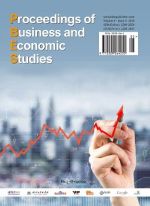Abstract
As metropolitan areas expand spatially, they encounter constraints imposed by the fixed daily time budget. Rail transit enhances transport efficiency, reduces costs, and facilitates the formation of a “transit economic field” centered on rail networks, thereby alleviating such temporal-spatial pressures. This paper adopts an integrated temporal-spatial analytical framework. Following a conceptual clarification of the transit economic field, it dissects the mechanisms through which rail transit improves mobility and examines how this field influences urban spatial patterns, temporal dynamics, and their interrelationships. It constructs a theoretical framework to explain the co-development of transit economic fields and cities, supplemented by empirical case studies. The key findings are as follows: Firstly, the transit economic field represents a high-density development model that expands both horizontally and vertically around rail networks. It mitigates temporal-spatial conflicts. Secondly, with rail networks as the core, the field integrates diverse spatial functions, facilitating the establishment of economic connections and stabilizing temporal-spatial relationships. Thirdly, the transit economic field contributes to the preservation of urban natural ecosystems and enhances urban livability. Overall, this research can provide insights for promoting rail transit-oriented development transitions in large cities and urban agglomerations.
References
Kokubo S, 2012, 10th Session: The Development of Suburban Railways and the Establishment of the Greater Tokyo City, August 11, 2025. https://tokyosigaku.jugem.jp/?eid=95
Sun T, 2024, Opportunities, Strategic Impacts, and Core Strategies of the Grand Paris Express Rail Transit Planning. Urban Planning International, 2024(1): 151–158.
Zhang C, Li X, 2023, Multidimensional and Multi-Scale Trends of TOD Theory and Its Application Practices in Developing Countries. Urban Planning International, 2023(5): 1–24.
Overton RC, Taylor GR, 1952, The Transportation Revolution, 1815–1860. The Economic History Review 57(3): 701–703.
Schivelbusch W, 1986, The Railway Journey: The Industrialization of Time and Space in the 19th Century, University of California Press, California.
Calthorpe P, 1993, The Next American Metropolis: Ecology, Community, and the American Dream, Princeton Architectural Press, New York.
Bertolini L, 1996, Nodes and Places: Complexities of Railway Station Redevelopment. European Planning Studies, 4(3): 331–345.
He SY, 2020, Regional Impact of Rail Network Accessibility on Residential Property Price: Modelling Spatial Heterogeneous Capitalization Effects in Hong Kong, China. Transportation Research Part A: Policy and Practice, 135: 244–263.
Li P, 2024, Quantitative Analysis of the Influence of Urban Rail Transit on Floor Area Ratio: A Case Study of Tokyo. Railway Transport and Economy, 46(6): 207–214.
Wang C, Chen H, 2024, Analysis of Development Context of “Node-Place” Model and Its Application at Home and Abroad. Railway Transport and Economy, 46(1): 155–164.
Zhao P, Zhang N, 2023, Connotation Analysis and Key Considerations of the TOD Development Model. Science & Technology Review, 41(24): 12–19.
Lan Y, Zhang Y, Yang Z, 2023, Planning and Development Suggestions for Integrated Development of Beijing Suburban Railway and the City. Urban Rapid Rail Transit, 36(4): 13–17.
Wang H, Yang K, Zou Y, et al., 2023, Research and Practice on Chengdu’s TOD “137” Circle Planning Model and “All in One” Concept. Science & Technology Review, 41(24): 74–81.
Wang X, 2017, Study on the Interactive Evolution Relationship Between Rail Transit and Metropolitan Form, dissertation, Beijing Jiaotong University.
